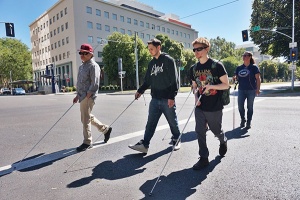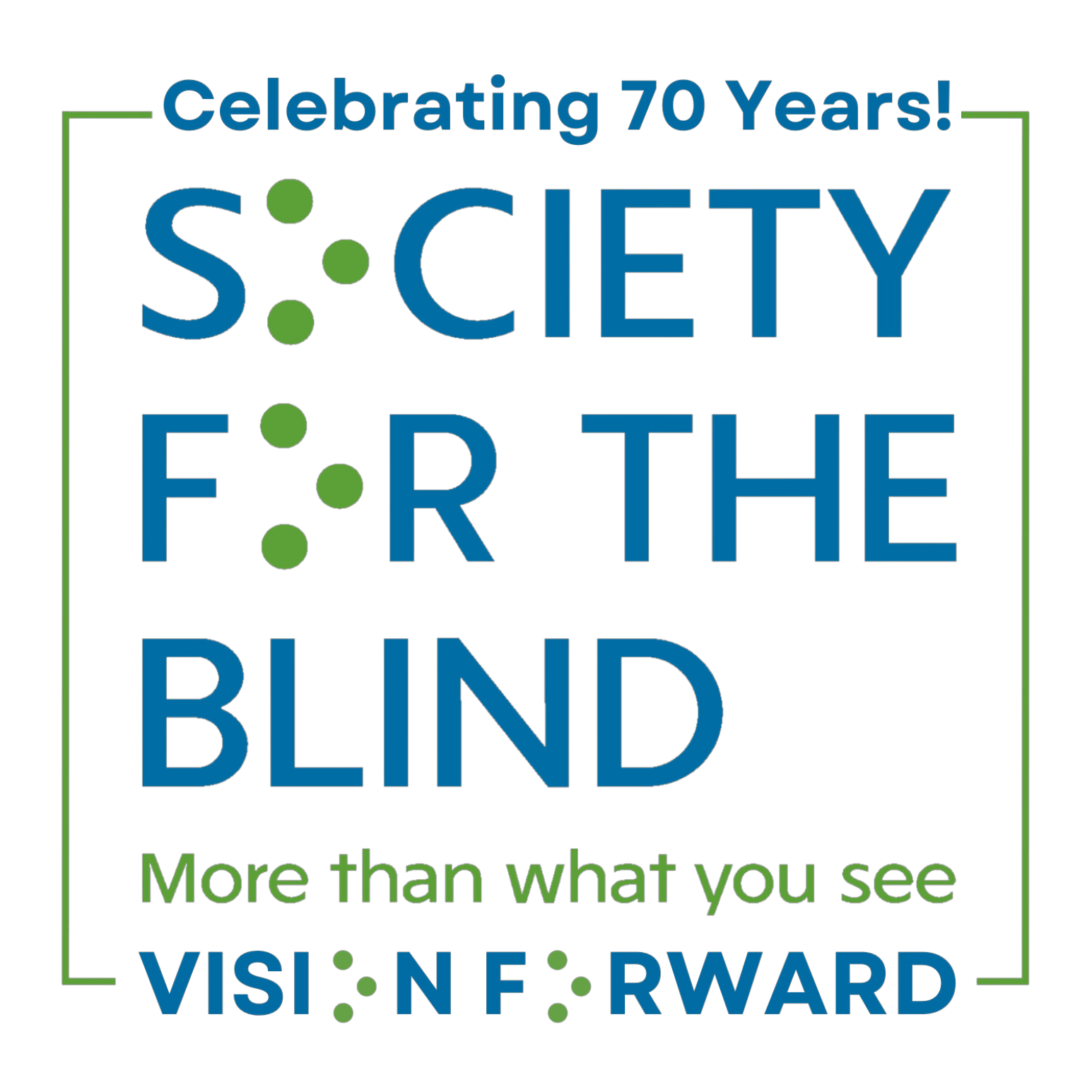Walking for Independence: White Cane Safety Day – October 15th

Society staff member and students crossing an intersection during a field trip through Midtown Sacramento
Society for the Blind will join with more than 15 community organizations to celebrate White Cane Safety Day this year. As part of our Youth and Family Resource Fair on Saturday, October 14, we will take a walk in the Midtown Grid from 2:15-3:30pm to see the new Brailled signage as we raise awareness of white cane safety.
We are grateful to our community partner, Capital Area Development Corporation (CADA), for adding Brailled signage to their new properties in Midtown. They contacted Society a year ago to ask for our input on the signs. “Now these properties let people with vision loss know the name of the business and what it offers. It is one more way that the Sacramento community is becoming more inclusive and recognizes the independence of blind people,” said Greg DeWall, Orientation and Mobility Instructor for Society for the Blind.
The U.S. Congress passed a joint resolution in 1964 designating October 15 as White Cane Safety Day. It was a major milestone for people living with blindness and low vision to show they could travel independently. What does the white cane mean for someone with vision loss? It allows them to “touch” their environment as they walk through it. With the cane, they avoid obstacles, find steps and curbs, step over cracks or uneven places in the sidewalk, find doorways, and get into cars and buses. The cane allows a person who is blind to move quickly and confidently instead of shuffling along apprehensively. The white cane means mobility, safety and freedom.
The National Federation of the Blind and the American Council of the Blind offer helpful guidance for sighted people who see blind people using white canes: “Remember that we can safely and independently navigate and explore the environment. There’s no need to shout warnings or try to physically steer us so that our canes won’t ‘bump’ into things. Remember that the cane is just an extension of our sense of touch. We are usually not lost, even if it looks that way to you; we may simply be exploring to learn what is around us. Feel free to greet us and say hello. If we do need any help or direction from you, we will ask; if not, we will just politely greet you in return.”
In all 50 states, if you are driving or cycling and see someone crossing in front of you with a white cane, you MUST stop to give them the right of way.
We hope you will join Society for the Blind on October 14 as we walk for white cane safety and celebrate the Brailled signage in Midtown Sacramento.
